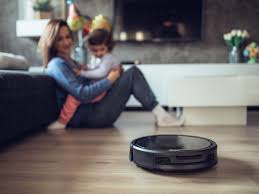In an era dominated by technological innovation, wearable devices and smart gadgets are not just accessories but integral components of our daily lives. These innovations have revolutionized how we monitor our health, stay connected, and interact with the world around us. From advanced fitness trackers to augmented reality glasses and AI-powered smart assistants, the latest developments in wearable tech promise to elevate convenience, efficiency, and personalization to unprecedented levels. This comprehensive exploration will delve into the hottest new trends, functionalities, and potentials of wearable technology and smart gadgets, shaping the future of consumer electronics.
1. Advanced Fitness Trackers and Health Monitors
Wearable devices designed for health monitoring have evolved significantly beyond basic functionalities like step counting and heart rate monitoring. Today, they integrate advanced sensors and analytics to offer comprehensive insights into various aspects of our health and well-being.
Biometric Sensors and Health Insights
Modern wearable devices feature a myriad of biometric sensors capable of monitoring vital signs with high precision. These sensors measure parameters such as blood oxygen levels, hydration levels, skin temperature, and even stress indicators like heart rate variability. By continuously tracking these metrics, wearables provide users with real-time feedback on their health status, enabling proactive management of well-being.
AI-Powered Health Analytics
The integration of artificial intelligence (AI) and machine learning (ML) algorithms in wearable devices enhances their capability to analyze biometric data effectively. These AI-driven systems can detect patterns, anomalies, and trends in health data that may indicate potential health issues or improvements. For instance, AI algorithms can learn individual user patterns over time and offer personalized health recommendations, such as adjusting activity levels, sleep patterns, or stress management techniques.
Personalized Health Recommendations
Based on the insights derived from biometric data and AI analysis, wearable devices provide actionable recommendations tailored to the user’s specific health goals. Whether it’s prompting to hydrate more frequently, suggesting breathing exercises to reduce stress, or optimizing sleep patterns for better rest, these personalized recommendations empower users to make informed decisions that enhance their overall health and quality of life.
Integration with Health Ecosystems
Many advanced wearable devices seamlessly integrate with health ecosystems, such as mobile apps and cloud-based platforms. This integration allows users to store and analyze their health data over extended periods, track progress towards fitness goals, and share insights with healthcare professionals for more informed medical consultations. The interoperability of these devices with existing health technologies ensures a holistic approach to personal health management.
2. Smartwatches with Enhanced Functionality
Smartwatches have evolved from mere timekeeping devices to multifunctional companions that enhance productivity, connectivity, and lifestyle management.
Extended Battery Life and Efficient Power Management
Advancements in battery technology have significantly improved the longevity of smartwatches, enabling them to operate for extended periods without frequent recharging. Enhanced power management features optimize battery usage by intelligently adjusting screen brightness, disabling non-essential functions when not in use, and leveraging low-power modes to extend battery life further. This ensures that smartwatches can reliably perform essential functions throughout the day, including fitness tracking, notifications, and communication.
Integration with 5G Connectivity
The integration of smartwatches with 5G networks marks a significant leap in connectivity capabilities. 5G networks offer faster speeds, lower latency, and greater bandwidth compared to previous generations, enabling smartwatches to deliver seamless experiences for tasks such as streaming high-definition content, making voice calls with crystal-clear clarity, and accessing cloud-based services instantaneously. This enhanced connectivity transforms smartwatches into powerful communication and productivity tools, bridging the gap between mobile devices and wearable technology.
Advanced Health and Fitness Tracking
Beyond basic fitness tracking, modern smartwatches incorporate advanced health monitoring features that rival dedicated fitness devices. Built-in sensors accurately measure metrics such as heart rate variability, blood oxygen saturation (SpO2), and sleep patterns, providing users with comprehensive insights into their physical well-being. AI algorithms analyze this data to offer personalized fitness recommendations, track progress towards health goals, and alert users to potential health issues that require attention.
Ecosystem Integration and App Support
Smartwatches integrate seamlessly with ecosystems of apps and services, allowing users to customize their devices with a wide range of applications. From productivity tools and navigation apps to entertainment and wellness programs, the availability of diverse apps enhances the versatility and functionality of smartwatches. Ecosystem integration also enables synchronization of data across devices, ensuring a cohesive user experience whether using a smartphone, tablet, or smartwatch.
3. Augmented Reality (AR) Glasses
Augmented reality (AR) glasses represent the next frontier in wearable technology, merging digital information with the physical world to enhance productivity, entertainment, and daily experiences.
Immersive AR Experiences
AR glasses overlay digital information, images, and interactive elements onto the wearer’s real-world field of view. This immersive experience transforms how users interact with their surroundings, offering enhanced navigation, real-time information overlays, and interactive gaming experiences. For example, AR glasses can provide turn-by-turn navigation directions directly in front of the user, superimpose virtual objects in the environment for training or educational purposes, and offer virtual tours of distant locations without leaving home.
Hands-Free Interaction and Control
AR glasses feature intuitive controls such as voice commands and gesture recognition, enabling hands-free interaction with digital content and applications. Voice-activated assistants respond to verbal cues to perform tasks like searching the web, sending messages, or initiating calls, enhancing convenience and productivity in various contexts. Gesture recognition technology allows users to interact with virtual interfaces by simply gesturing with their hands, making complex tasks more accessible and intuitive.
Applications in Professional Settings
AR glasses have applications across various industries, from healthcare and manufacturing to education and retail. In healthcare, AR glasses assist surgeons during complex procedures by overlaying patient data, medical images, and procedural instructions directly in their field of view, enhancing precision and reducing reliance on external displays. In manufacturing, AR glasses provide technicians with real-time assembly instructions, safety alerts, and maintenance procedures, improving efficiency and reducing errors on the factory floor.
Privacy and Security Considerations
The adoption of AR glasses raises concerns about privacy and data security due to their ability to capture and process real-time audiovisual information. Manufacturers address these concerns by implementing robust security measures such as encrypted data transmission, user authentication protocols, and privacy settings that allow users to control access to personal information and recordings. Compliance with data protection regulations ensures that AR glasses adhere to stringent privacy standards, safeguarding user confidentiality and mitigating risks associated with unauthorized data access.
4. AI-Powered Smart Assistants
AI-driven smart assistants are integral to modern wearable devices and smart gadgets, offering personalized assistance, automation, and seamless integration with connected ecosystems.
Natural Language Processing and Contextual Understanding
AI-powered smart assistants leverage advanced natural language processing (NLP) algorithms to understand and respond to complex commands, queries, and contextual cues from users. These capabilities enable smart assistants to engage in natural, conversational interactions, providing accurate answers to questions, executing commands, and performing tasks such as setting reminders, managing schedules, and controlling smart home devices. Contextual understanding allows smart assistants to interpret user preferences, habits, and intentions over time, tailoring responses and recommendations to enhance user experience and satisfaction.
Integration with Smart Home Devices
Smart assistants serve as centralized hubs for controlling and managing connected smart home devices, including lighting, thermostats, security systems, and appliances. Integration with IoT (Internet of Things) platforms enables users to voice-activate commands to adjust settings, automate routines, and monitor device status from anywhere. For example, users can instruct smart assistants to dim lights, adjust room temperature, or lock doors remotely, enhancing convenience, energy efficiency, and home security.
Personalization and User Profiles
AI-powered smart assistants create personalized user profiles that store preferences, habits, and routines to deliver customized experiences. By analyzing data such as daily schedules, media consumption habits, and interaction patterns, smart assistants anticipate user needs and proactively
5. Wearable Tech for Mental Health (Continued)
Mood Tracking and Emotional Well-being
Some wearable devices incorporate mood tracking capabilities to monitor emotional states and mental well-being over time. Through user input and biometric data analysis, these devices detect changes in mood patterns, identify triggers for stress or anxiety, and provide insights into emotional fluctuations. Mood tracking features enable users to track their emotional responses to daily activities, social interactions, and environmental factors, fostering self-awareness and emotional resilience. Data visualization tools present trends and correlations between mood fluctuations and external influences, empowering users to make informed decisions to support their mental health.
Cognitive Behavioral Therapy (CBT) Tools
Emerging wearable technologies integrate cognitive behavioral therapy (CBT) principles into digital applications designed to alleviate symptoms of anxiety, depression, and other mental health conditions. CBT tools offer guided exercises, interactive modules, and therapeutic interventions that promote cognitive restructuring, behavior modification, and emotional regulation. Wearable devices deliver personalized CBT interventions based on user preferences, progress, and therapeutic goals, enhancing accessibility to evidence-based mental health support and empowering individuals to manage symptoms effectively.
Social Support Networks
Wearable tech facilitates connectivity to social support networks and peer communities through integrated communication features, social sharing platforms, and online forums. Users can engage in virtual support groups, share experiences, and exchange emotional support with peers facing similar challenges. Social support networks provide a sense of belonging, empathy, and solidarity, reducing feelings of isolation and enhancing emotional resilience. Wearable devices promote social connectivity by facilitating communication, collaboration, and mutual encouragement among individuals navigating mental health journeys.
Mindfulness and Relaxation Techniques
Many wearable devices offer mindfulness and relaxation features that promote stress reduction, emotional balance, and mental clarity. Guided meditation sessions, breathing exercises, and relaxation techniques are accessible through wearable apps and digital interfaces, enabling users to practice mindfulness anytime, anywhere. Biofeedback sensors monitor physiological responses to mindfulness practices, such as heart rate variability and skin conductance, providing real-time feedback on stress levels and relaxation effectiveness. Mindfulness tools encourage regular practice of self-care rituals, fostering emotional well-being and resilience in daily life.
6. Fashion-Tech Fusion
The convergence of fashion and technology has led to the development of stylish wearables that combine aesthetic appeal with advanced functionality and performance.
Customizable Designs and Personalization
Fashion-tech wearables emphasize customizable designs, interchangeable components, and personalized aesthetics that cater to individual style preferences and lifestyle needs. Wearable devices feature modular elements, such as interchangeable straps, bezels, and accessories, allowing users to customize their appearance to suit various occasions and personal tastes. Personalization options extend to digital interfaces, watch faces, and user interfaces that reflect personal branding, artistic expression, and fashion-forward trends in wearable technology.
High-Performance Fabrics and Materials
Smart clothing and fashion-tech accessories integrate high-performance fabrics, textiles, and materials that enhance comfort, durability, and functionality in wearable designs. Advanced materials offer moisture-wicking properties, temperature regulation, and UV protection to optimize performance during physical activities and outdoor adventures. Smart textiles embed sensors, conductive threads, and flexible electronics into garment construction, enabling biometric monitoring, motion tracking, and health diagnostics in wearable fashion solutions. Fashion-tech fusion blends innovative materials with contemporary aesthetics to redefine wearable style and performance for modern lifestyles.
Smart Accessories and Wearable Jewelry
Fashion-tech accessories and wearable jewelry combine technology with elegance, functionality, and sophistication in wearable design. Smart accessories include rings, bracelets, and necklaces that integrate sensors, LEDs, and connectivity features for health monitoring, notifications, and personal safety. Wearable jewelry offers discreet functionality and stylish aesthetics, seamlessly integrating technology into everyday attire for professional, social, and special occasions. Fashion-forward designs, premium materials, and craftsmanship elevate wearable accessories as statement pieces that harmonize technology with personal expression and lifestyle preferences.
Conclusion
The rapid evolution of wearable technology and smart gadgets continues to redefine consumer experiences, lifestyles, and digital interactions in the 21st century. From advanced fitness trackers and health monitors to immersive AR glasses, AI-powered smart assistants, and fashion-tech wearables, these innovations enhance connectivity, productivity, and personalization across diverse applications. Wearable tech for mental health supports emotional well-being through mood tracking, CBT tools, mindfulness practices, and social support networks, empowering individuals to manage stress, anxiety, and mental health conditions effectively. Fashion-tech fusion combines customizable designs, high-performance materials, and smart accessories to merge technology with fashion-forward aesthetics in wearable solutions. As wearable technology evolves, it promises to enrich daily life, inspire creativity, and shape the future of connected living through innovative design, functionality, and user-centric experiences.



